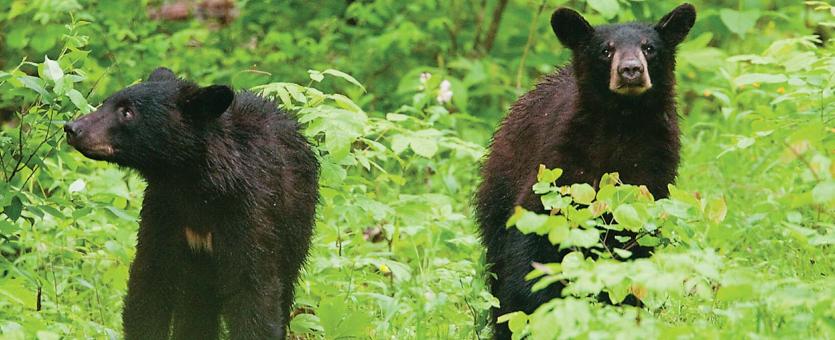A burden to bear: humans remain greatest threat to one of Missouri’s biggest predator

Although climate change poses a threat to many species across the Midwest, researchers say black bears are resilient and relatively unbothered by its current effects.
Much of this resilience comes from the fact that bears are opportunistic feeders. Bears share food sources with many other animals, from raccoons to birds and coyotes. Laura Conlee, furbearer biologist for the Missouri Department of Conservation, explained that bears are creative when finding food. They dig up wasp nests, tear into old logs and overturn large rocks to get at the insects hiding underneath.
Don White Jr., a wildlife ecology professor at the University of Arkansas in Monticello, said that bear reproduction is tied to mast production — nuts, seeds, buds or fruits of trees — from the past fall. In the fall, acorns are one of their staples.
Tree mast may be the mammals’ food source most affected by climate change. Just as droughts can decrease soft mast production, like berry crops in the spring, a long wet season can decrease the fall production from lowland hardwoods like oaks. But White said it’s hard to know how much of a long term effect it would have.
“Droughts can have a very major impact on black bear reproduction because it doesn’t allow females to gain that weight,” he said. But as long as bears aren’t overhunted, he said the population generally recovers swiftly.
“We’ll always have forests, but we’ll have different forests under climate change. What direction will they go? Will we have more drought resistant species? Maybe a more maple type forest? That wouldn’t be able to support the number of wildlife species in an oak forest,” he said.
If a drought did reduce available food sources, bears may be more likely to exhibit nuisance behaviors seeking out human food as an alternative.
As for overpopulation, both researchers said bears won’t exceed a natural carrying capacity, like deer, because they have such large home ranges and reproduce slowly.
Instead, they’re liable to exceed our cultural carrying capacity, making homes near communities and farms. Missouri black bears have reached a sizable population that is expected to double in the next ten years.
“Bears thirty years ago didn’t occur as widespread geographically and they weren’t here in the numbers we have currently,” Conlee said, “So as that population continues to grow and expand as humans continue to grow and build houses, it increases situations where those social things will come into play.”
As bear populations expand into new areas of the state, Missourians will need to be “bear aware” in order to minimize conflict with them.
The Department of Conservation asks that all black bear sightings be reported so they can effectively track the expansion of bear populations. Homeowners along the wildland urban interface in particular need to take precautions to prevent bears from getting into easy food sources like bird feeders, pet food, garbage or livestock.
Conlee emphasized that because bears are recolonizing areas they haven’t lived in for decades, all Missourians need to know what that entails.
It’s crucial to prevent bears from associating humans with food in the first place. Bears have been known to return to the same yards year after year because of previous success finding food, Conlee said.
When a bear exhibits nuisance behavior, conservation agents and wildlife damage biologists try to respond with negative feedback training in the form of using rubber bullets, bean bag rounds and other methods in hopes of preventing unnecessary euthanasia,
“No matter where you live it’s not out of the realm of possibility that you could have a bear sighting,” she said, “It’s time to think about what that means for your yard and your farm and your resources, because a lot of these bears often come into contact with homes and communities.”
